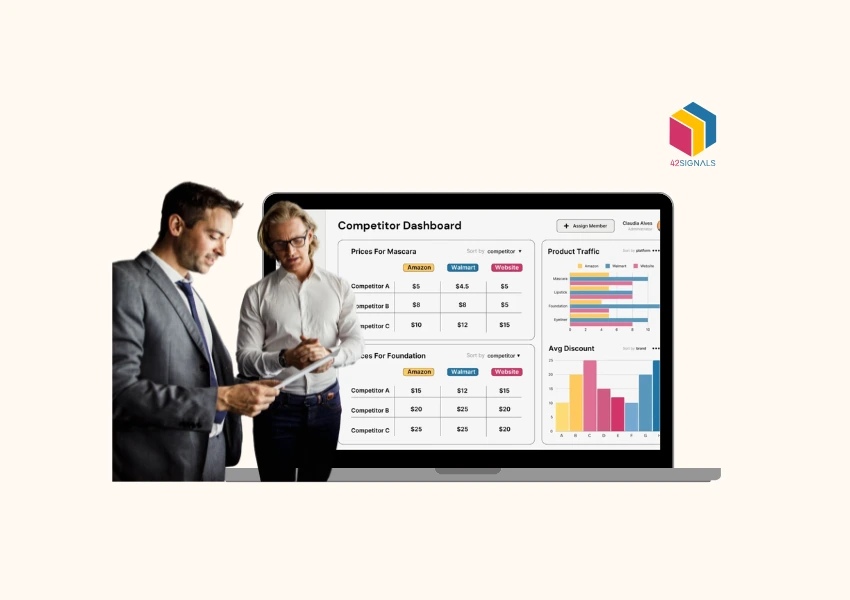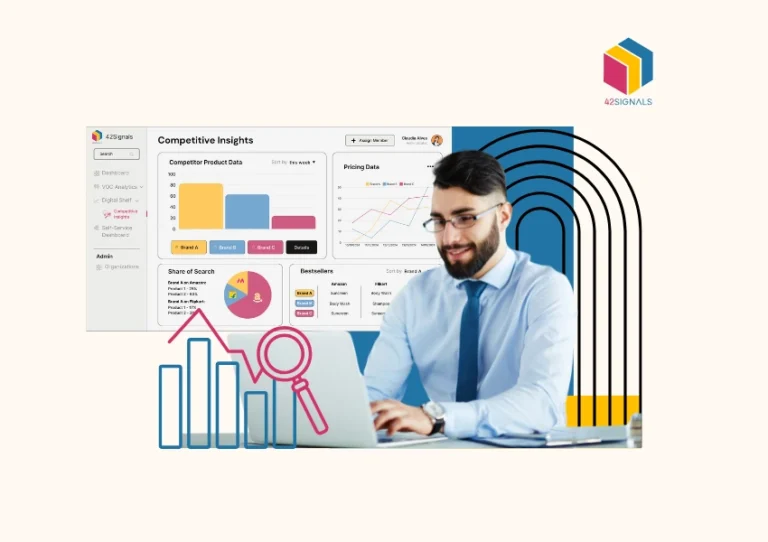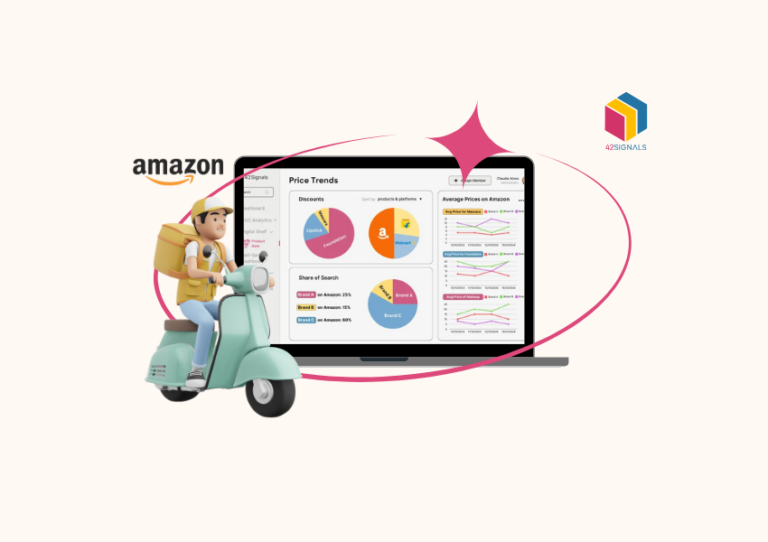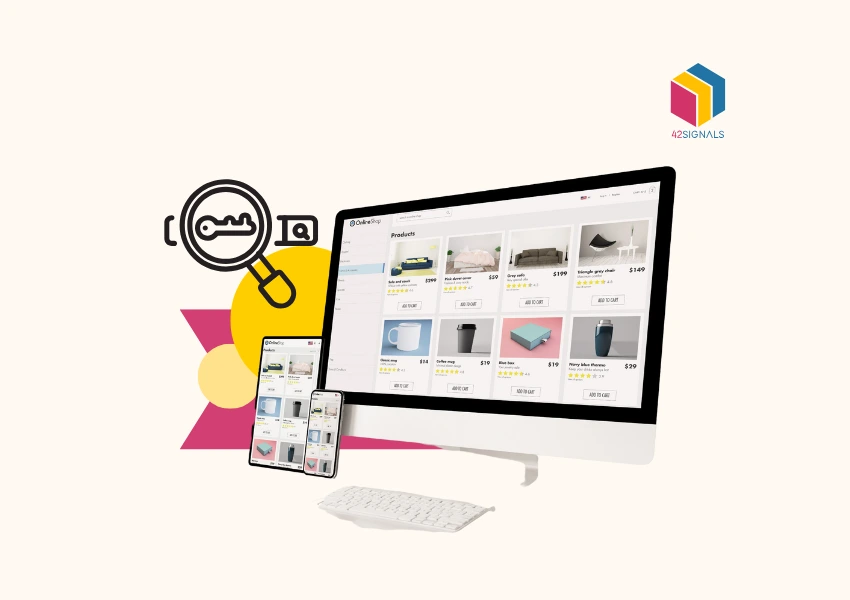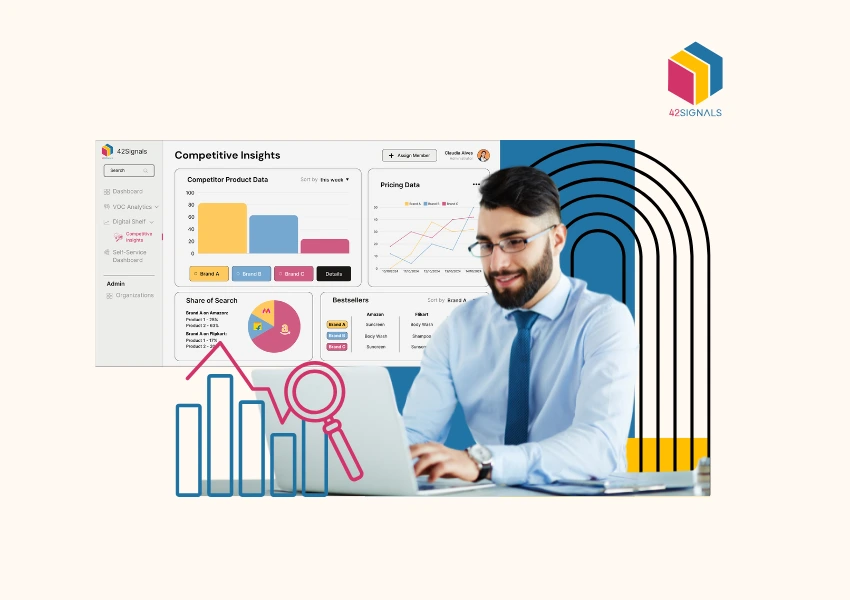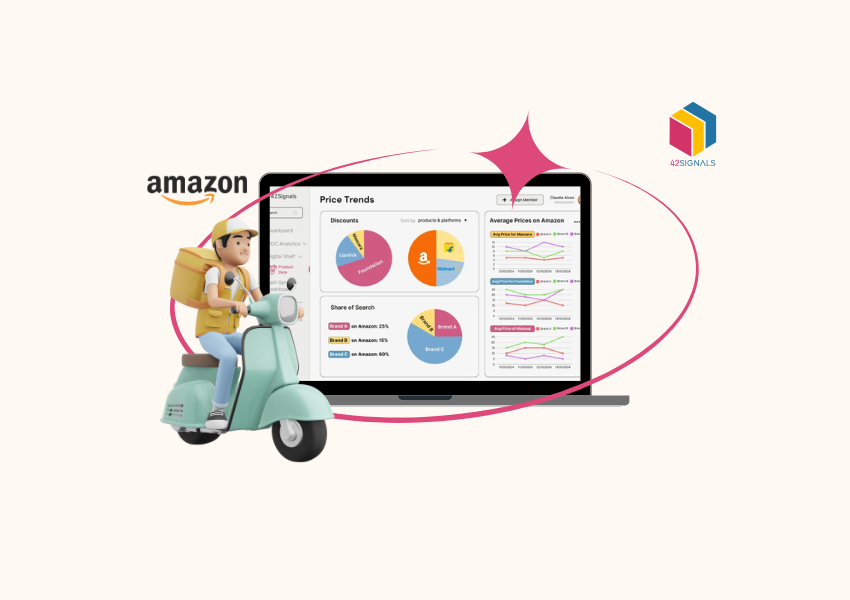In the cutthroat world of modern business, resting on your laurels is a surefire way to lose ground. Competitors are always lurking, ready to capitalize on your blind spots. But how do you stay vigilant without drowning in data? The answer lies in blending time-tested competition monitoring with modern tools like competitor analysis dashboards and digital shelf analytics.
Let’s dive into strategies that don’t just track rivals but outsmart them—no robotic jargon, just actionable insights.
The Problem with “Set-and-Forget” Competition Monitoring
Most brands treat competition monitoring like a quarterly chore. They skim pricing pages, glance at social media, and call it a day. But here’s the catch: your competitors aren’t static. They’re iterating, testing, and pivoting in real-time. A one-off report won’t cut it.
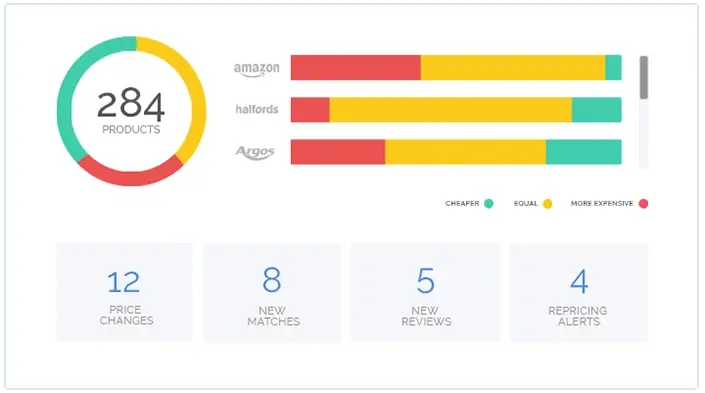
Image Source: Competitor Monitor
Take Brand X, for example. They dominated the skincare aisle for years until a startup, Brand Y, quietly optimized their Amazon listings with hyper-local keywords.
Within months, Brand Y’s search rankings soared, and Brand X’s sales plummeted. Why? Brand X relied on outdated manual reports, while Brand Y used automated competitor analysis tools to track shifts in real-time.
The Lesson:
Competitive analysis isn’t a checkbox—it’s a mindset. To win, you need a dynamic strategy.
Step 1: Ditch Spreadsheets for Competitor Analysis Dashboards
Spreadsheets are the Achilles’ heel of competitive strategy. They’re clunky, slow, and prone to errors. Imagine trying to track 10 competitors across 5 channels using Excel. By the time you finish, the data is already stale.

This is where competitor analysis dashboards shine. Picture a live feed that aggregates data from Amazon, Google Ads, social media, and even niche forums. Tools like Klue or Kompyte let you:
- Track pricing changes as they happen.
- Monitor competitors’ ad spend and creative tactics.
- Flag sudden review spikes (positive or negative).
Real-World Example:
A beverage company noticed a rival’s Instagram engagement skyrocketing. Their dashboard revealed the competitor was running meme-style ads targeting Gen Z. The team pivoted their own campaign within days, using similar humor but with a sustainability twist. Result? A 30% boost in follower growth.
Why It Works:
Dashboards turn chaos into clarity. You spot trends faster and act before competitors even notice.
Step 2: Master the Digital Shelf with Unconventional Tactics
The “digital shelf” isn’t just about product listings—it’s a battleground for attention. Brands often obsess over SEO but forget the nuances. Let’s break it down:
Keyword Gaps Aren’t Just for Google
Tools like 42Signals aren’t just for Amazon sellers. Use them to reverse-engineer competitors’ keyword strategies. For instance, if a rival ranks for “ergonomic office chair for back pain,” create content that answers unaddressed questions like, “How to adjust an ergonomic chair for posture?”

Content That Converts (Without Being Salesy)
Look at Brooklinen’s product pages. They don’t just list thread counts—they tell a story about “luxury sleep experiences.” Use digital shelf analytics to audit your product descriptions. Are you selling features or outcomes?
The Dark Art of Review Mining
Negative reviews of competitors are goldmines. If customers complain about a rival’s product durability, emphasize your warranty or material quality in ads. Tools like ReviewMeta can help analyze patterns in competitor reviews.
Pro Tip:
Run a monthly “digital shelf audit.” Compare your product images, videos, and Q&A sections against your top three rivals. If their visuals look like a Netflix trailer and yours resemble a PowerPoint slide, it’s time to level up.
Step 3: Use Competitive Benchmarking Tools to Play the Long Game
Benchmarking isn’t about copying—it’s about context. Let’s say your email campaign has a 20% open rate. Sounds decent, right? But if your competitor’s rate is 35%, you’re leaving money on the table.

Competitive benchmarking tools like 42Signals, SimilarWeb, or SpyFu reveal gaps you didn’t know existed:
- How does your site speed compare to industry leaders?
- Are competitors ranking for niche keywords you’ve overlooked?
- What’s their social media engagement rate, and how can you beat it?
Case Study:
A mid-sized fashion retailer used SimilarWeb to discover competitors were driving traffic through Pinterest tutorials. They launched a “Style Hacks” series, partnering with micro-influencers. Within six months, Pinterest became their second-largest referral source.
The Takeaway:
Benchmarking isn’t a vanity metric. It’s a roadmap to outperforming the category.
Step 4: Automate the Grunt Work (So Your Team Can Think)
Let’s be real: manual data collection is soul-crushing. Why waste hours scraping pricing data when automated competitor analysis tools can do it in seconds?
Tools like 42Signals excel here. It:
- Alert you when a competitor stocks out (so you can push inventory).
- Track flash sales and predict when they’ll end.
- Analyze competitors’ discount patterns (e.g., “They drop prices every Thursday”).
A Cautionary Tale:
A tech brand ignored automation, assuming their “gut feel” was enough. They missed a rival’s stealth launch of a budget-friendly alternative. By the time they reacted, the competitor owned 18% of the market.
The Bottom Line:
Automation isn’t cheating—it’s efficiency. Use it to free your team for creative strategizing.
Step 5: Turn Insights into Action (Before Lunchtime)
Data is useless without execution. Here’s how agile brands stay ahead:
- Create a “War Room”
Assemble a cross-functional team (marketing, sales, product) to review dashboard insights weekly. Assign clear owners for each action item.
- Run Rapid Experiments
If a competitor’s TikTok campaign goes viral, test a similar format within 48 hours—but add your unique twist.
- Reward Curiosity
Encourage employees to share competitor findings. At Zapier, teams get bonuses for spotting threats early.
Example:
When a meal-kit brand noticed rivals pushing plant-based options, they launched a “Flexitarian Box” with customizable protein choices. It became their top-selling SKU in Q1.
The Future of Competition Monitoring: Beyond the Obvious
The game is changing. Soon, AI will predict competitor moves before they happen. Imagine a tool that analyzes a rival’s hiring trends (e.g., hiring AI engineers = preparing a tech-driven product). Or sentiment analysis that flags a competitor’s PR crisis before it trends.
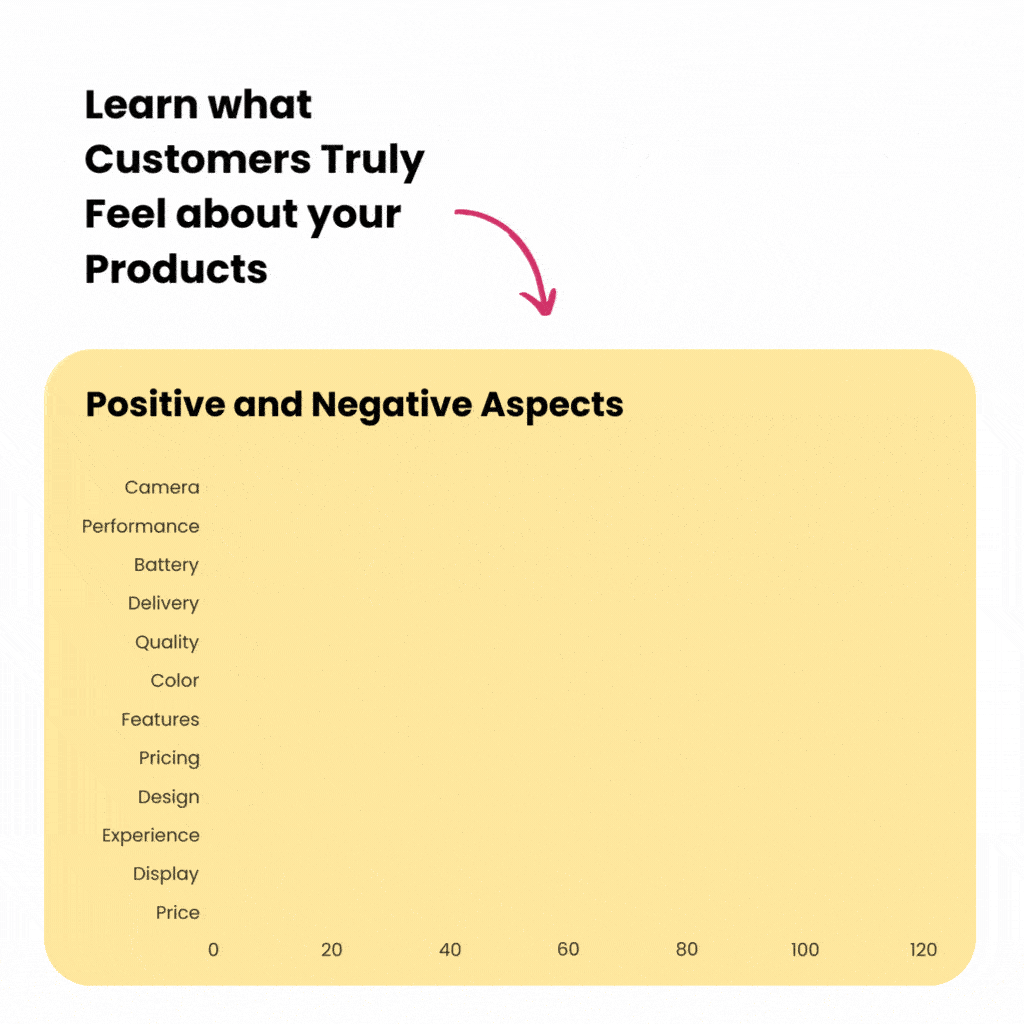
Your Move:
Start small. Pick one tool (like a competitor analysis dashboard) and master it. Then layer in automation and benchmarking.
Final Word: Be the Hunter, Not the Prey in Competition Monitoring
Competition monitoring isn’t about paranoia—it’s about empowerment. By blending tools like digital shelf analytics with human ingenuity, you’ll stop chasing rivals and start setting the pace.
Remember: The goal isn’t to mimic competitors. It’s to outthink them.
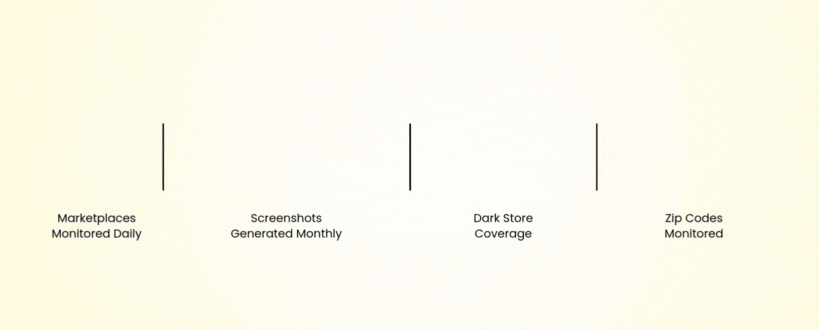
If you are ready to look at competitor data for your brand, sign up with 42Signals for a free trial today.
